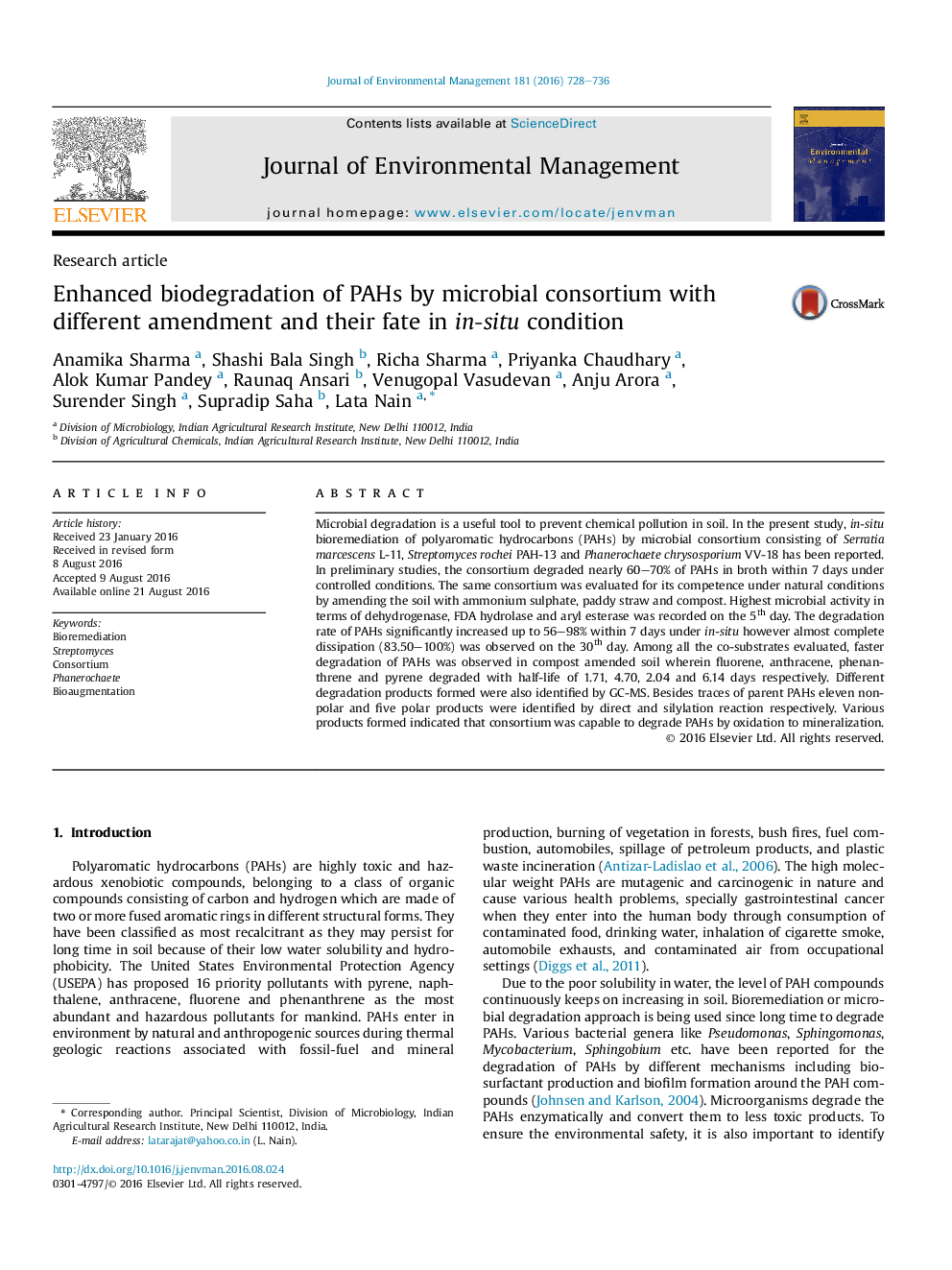| Article ID | Journal | Published Year | Pages | File Type |
|---|---|---|---|---|
| 7479848 | Journal of Environmental Management | 2016 | 9 Pages |
Abstract
Microbial degradation is a useful tool to prevent chemical pollution in soil. In the present study, in-situ bioremediation of polyaromatic hydrocarbons (PAHs) by microbial consortium consisting of Serratia marcescens L-11, Streptomyces rochei PAH-13 and Phanerochaete chrysosporium VV-18 has been reported. In preliminary studies, the consortium degraded nearly 60-70% of PAHs in broth within 7 days under controlled conditions. The same consortium was evaluated for its competence under natural conditions by amending the soil with ammonium sulphate, paddy straw and compost. Highest microbial activity in terms of dehydrogenase, FDA hydrolase and aryl esterase was recorded on the 5th day. The degradation rate of PAHs significantly increased up to 56-98% within 7 days under in-situ however almost complete dissipation (83.50-100%) was observed on the 30th day. Among all the co-substrates evaluated, faster degradation of PAHs was observed in compost amended soil wherein fluorene, anthracene, phenanthrene and pyrene degraded with half-life of 1.71, 4.70, 2.04 and 6.14 days respectively. Different degradation products formed were also identified by GC-MS. Besides traces of parent PAHs eleven non-polar and five polar products were identified by direct and silylation reaction respectively. Various products formed indicated that consortium was capable to degrade PAHs by oxidation to mineralization.
Related Topics
Physical Sciences and Engineering
Energy
Renewable Energy, Sustainability and the Environment
Authors
Anamika Sharma, Shashi Bala Singh, Richa Sharma, Priyanka Chaudhary, Alok Kumar Pandey, Raunaq Ansari, Venugopal Vasudevan, Anju Arora, Surender Singh, Supradip Saha, Lata Nain,
